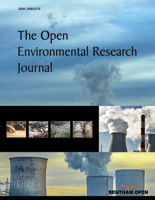Manuscripts for research articles and letters submitted to the respective journals should be divided into the following sections; however, there can be an extension in the number of sections in review articles in accordance with the requirements of the topic.
Structured Abstract:
The abstract of an article should be its clear, concise and accurate summary, having no more than 250 words, and including the explicit sub-headings (as in-line or run-in headings in bold). Use of abbreviations should be avoided and the references should not be cited in the abstract.
All the original research articles systematic reviews must be accompanied with a structured abstract. Ideally, each abstract should include the following sub-headings, but these may vary according to requirements of the article.
- Background
- Objective
- Methods
- Results
- Conclusion
The headings can vary, but must state the purpose of the study, details of the participants, measurements, methods, main findings and conclusion.
Text Organization:
The main text should begin on a separate page and should be divided into title page, abstract and the main text. The text may be subdivided further according to the areas to be discussed, which should be followed by the List of Abbreviations (if any), Conflict of Interest, Acknowledgements and Reference sections. For review, the manuscript should be divided into title page, abstract and the main text. The text may be subdivided further according to the areas to be discussed, which should be followed by the Acknowledgements and Reference sections. The Review Article should mention any previous important recent and old reviews in the field and contain a comprehensive discussion starting with the general background of the field. It should then go on to discuss the salient features of recent developments. The authors should avoid presenting material which has already been published in a previous review. The authors are advised to present and discuss their observations in brief.
For Research Articles the manuscript should begin with the title page and abstract followed by the main text, which must be structured into separate sections as Introduction, Materials and Methods, Results, Discussion, Conclusion, Conflict of Interest, Acknowledgements and References.
The manuscript style must be uniform throughout the text and 10 pt Times New Roman fonts should be used. The full term for an abbreviation should precede its first appearance in the text unless it is a standard unit of measurement. The reference numbers should be given in square brackets in the text. Italics should be used for Binomial names of organisms (Genus and Species), for emphasis and for unfamiliar words or phrases. Non-assimilated words from Latin or other languages should also be italicized e.g.per se, et al., etc.
If any of the following are to be used in the manuscript, follow the below details:
Section Headings:
Section headings should be numbered sequentially, left aligned and have the first letter capitalized, starting with the introduction. Sub-section headings however, should be in lower-case and italicized with their initials capitalized. They should be numbered as 1.1, 1.2, etc.
INTRODUCTION:
The Introduction section should include the background and aims of the research in a comprehensive manner.
MATERIALS AND METHODS:
This section provides details of the methodology used along with information on any previous efforts with corresponding references. Any details for further modifications and research should be included. Sufficient details should be provided to the reader about the original data source in order to enable the analysis, appropriateness and verification of the results reported in the study.
It is important for the Method Section should be sufficiently detailed in respect of the data presented, and the results produced from it. This section should include all the information and protocol gathered for the study at the time when it was being written. If the study is funded or financially supported by an organization to conduct the research, then it should be mentioned in the Method Section. Methods must be result-oriented.
EXPERIMENTAL:
Repeated information should not be reported in the text of an article. A calculation section must include experimental data, facts and practical development from a theoretical perspective.
RESULTS:
The important and main findings of the study should come first in the Results Section. The tables, figures and references should be given in sequence to emphasize the important information or observations related to the research. The repetition of data in tables and figures should be avoided. Results should be precise.
DISCUSSION:
This should explore the significance of the results of the work, and present reproducible procedure. Extensive citations and discussion of published literature should be avoided.
The Results and discussions may be presented individually or combined in a single section with short and informative headings.
CONCLUSION:
A small paragraph summarizing the contents of the article, presenting the final outcome of the research or proposing further study on the subject, may be given at the end of the article under the Conclusion section.
FUNDING:
The authors need to declare the funding sources of their manuscripts clearly by providing the name of the funding agency or financial support along with allotted grant/award number in round brackets (if applied), for instance, “This work was financially supported by [Name of the funding agency] (Grant number XXX).
Similarly, if a paper does not have any specific funding source, and is part of the employment of the authors, then the name of the employer will be required. Authors will have to clearly state that the funder was involved in writing, editing, approval, or decision to publish the article.
Microarray Data:
The authors will be required to submit the Microarray experiment data to the ArrayExpress using the MIAMExpress submission tool (www.ebi.ac.uk/arrayexpress/), which will be subjected to reviewing by the curation team and if accepted, an ArrayExpress accession number would be assigned for it. The ArrayExpress offers the facility to maintain the data until the related paper is published.
Microarray data should be made available for reviewers and editors at the time of manuscript submission in a MIAME compliant and widely accessible format. Submission of large raw and/or analyzed microarray data files as supplementary data to the journal should be discouraged, which may alternatively be submitted either to the Gene Expression Omnibus http://www.ncbi.nlm.nih.gov/geo/ or ArrayExpress http://www.ebi.ac.uk/arrayexpress repositories, thereby obtaining an accession number for the journal and any necessary passwords, to facilitate the reviewers and editors of a manuscript to access the data. The submission of the microarray data to either of these repositories should be done at or before acceptance of a paper for publication, with accession number being allotted well before publication.
Genetic And Drug Abbreviations And Acronyms:
- Genes, mutations, genotypes, and alleles should also be indicated in italics but the protein product of a gene should be in Roman type . Use the recommended name by consulting the appropriate genetic nomenclature database, e.g., HUGO for human genes. It is sometimes advisable to indicate the synonyms for the gene the first time it appears in the text. Gene prefixes such as those used for oncogenes or cellular localization should be shown in roman: v-fes, c-MYC, etc.
- The Recommended International Non-Proprietary Name (rINN) of drugs should be provided.
- In case of usage of symbols that do not conform to those that have previously appeared in the literature, their aliases may be obtained from the approved nomenclature in the Human Gene Nomenclature Database (Genew) and LocusLink, to allow retrieval of all the information available for each gene.
Accession Numbers:
All appropriate datasets, images, and information should be deposited in public resources. Please provide the relevant accession numbers (and version numbers, if appropriate) and any necessary passwords to enable the reviewers and editors of a manuscript to access the data.
Providing accession numbers facilitates linking to and from the established databases and integrates the article with a broader collection of scientific information, therefore list all accession numbers should be listed directly after the Supporting Information section.
All accession numbers for all entities such as genes, proteins, mutants, diseases, etc., for which there is an entry in a public database should be included in the manuscript. Experimental data should be submitted to the appropriate databases, with a release date corresponding to the date of publication.
Greek Symbols And Special Characters:
Greek symbols and special characters often undergo formatting changes and get corrupted or lost during preparation of manuscript for publication. To ensure that all special characters used are embedded in the text, these special characters should be inserted as a symbol but should not be a result of any format styling (Symbol font face) otherwise they will be lost during conversion to PDF/XML.2
Authors are encouraged to consult reporting guidelines. These guidelines provide a set of recommendations comprising a list of items relevant to their specific research design. All kinds of measurements should be reported only in International System of Units (SI).
Supportive/Supplementary Material (if any):
We do encourage to append supportive material, for example a PowerPoint file containing a talk about the study, a PowerPoint file containing additional screenshots, a Word, RTF, or PDF document showing the original instrument(s) used, a video, or the original data (SAS/SPSS files, Excel files, Access Db files etc.) provided it is inevitable or endorsed by the journal's Editor.
Supportive/Supplementary Material intended for publication must be numbered and referred to in the manuscript but should not be a part of the submitted paper. In-text citations as well as a section with the heading "Supportive/Supplementary Material" before the "References" section should be provided. Here, list all Supportive/Supplementary Material and include a brief caption line for each file describing its contents.
Any additional files will be linked into the final published article in the form supplied by the author, but will not be displayed within the paper. They will be made available in exactly the same form as originally provided only on our Web site. Please also make sure that each additional file is a single table, figure or movie (please do not upload linked worksheets or PDF files larger than one sheet). Supportive/ Supplementary material must be provided in a single zipped file not larger than 4 MB.
Authors must clearly indicate if these files are not for publication but meant for the reviewers'/editors' perusal only.





